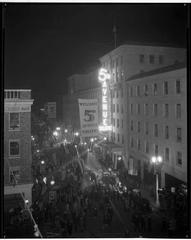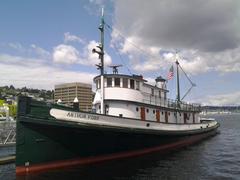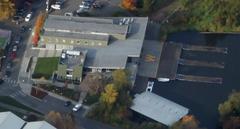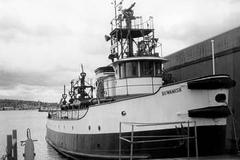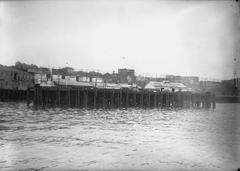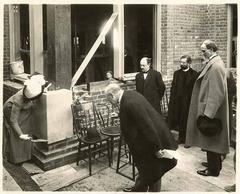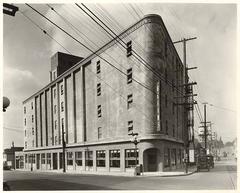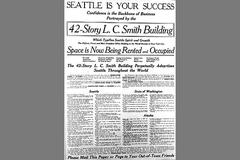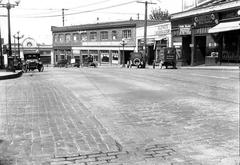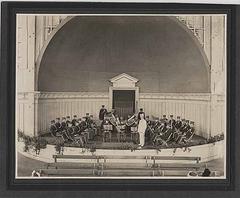
Double Header Seattle: Visiting Hours, Tickets, and Historical Sites Guide
Date: 04/07/2025
Introduction
The Double Header, once located at 407 2nd Avenue South in Seattle’s historic Pioneer Square, holds a significant place in both LGBTQ+ and American cultural history. Operating from 1934 until its closure in 2015, it was one of the oldest continuously running gay bars in the United States and a cornerstone of Seattle’s queer community. Beyond being a nightlife spot, the Double Header served as a sanctuary, a cultural incubator, and a symbol of resilience during times when LGBTQ+ identities were criminalized and marginalized (HistoryLink Tours; LGBTQ WA Timeline; Seattle Civil Rights and Labor History Project).
Today, while the bar itself no longer operates, its legacy endures through preserved signage, archival projects, and guided tours. This comprehensive guide explores the Double Header’s history, its cultural significance, practical visitor information, and ways to explore related LGBTQ+ historical sites in Seattle.
Table of Contents
- Introduction
- Origins and Early Years (1930s–1950s)
- Cultural Significance and Community Role
- Evolution Through the Decades (1960s–1980s)
- Notable Events and Figures
- Decline and Closure (1990s–2015)
- Visiting Pioneer Square and Seattle’s LGBTQ+ Historical Sites
- Practical Tips for Visitors
- Preservation and Legacy
- Frequently Asked Questions (FAQ)
- Conclusion and Call to Action
- References
Origins and Early Years (1930s–1950s)
Founded in 1934 by Joseph Bellotti Sr., the Double Header quickly became a rare safe space for Seattle’s queer community. Set above the Casino Pool Hall—later known as Madame Peabody’s School of Dance—the Double Header was a haven at a time when same-sex relationships and expressions were criminalized (HistoryLink Tours; LGBTQ WA Timeline). The venue allowed same-sex dancing and socialization, activities often targeted by police raids. Pioneer Square, then “Skid Row,” was a gathering point for marginalized communities, including LGBTQ+ people (OutHistory).
Cultural Significance and Community Role
The Double Header was more than just a bar—it was a crucial social and cultural hub. It fostered community, self-expression, and mutual support, especially during periods of legal and social persecution. The bar’s central location in Pioneer Square provided a degree of safety and anonymity, as the area was known for its nightlife and diversity (HistoryLink Tours). The venue’s basement, The Casino, was renowned for drag shows and after-hours gatherings, further cementing its reputation as a vibrant queer sanctuary (OutHistory).
Evolution Through the Decades (1960s–1980s)
As broader LGBTQ+ movements emerged in Seattle, the Double Header maintained its role as a community anchor. The 1960s and 1970s saw the rise of organizations like the Dorian Society and the opening of the city’s first Gay Community Center (LGBTQ WA Timeline). Despite a shifting queer geography—particularly as Capitol Hill became the new hub—the Double Header remained a touchstone for both older and younger LGBTQ+ generations (HistoryLink Tours). Its inclusivity and adaptability contributed to its longevity.
Notable Events and Figures
The Double Header’s history is steeped in stories of resilience and creativity. Founder Joseph Bellotti Sr. demonstrated courage in operating openly queer spaces during hostile times. The venue was a platform for drag artists and featured performances by the all-female oompah band, the Cracker Barrels (OutHistory). Notable visitors, such as Tallulah Bankhead, added to its lore (HistoryLink Tours). Oral histories and community projects, like those collected by Come Out Seattle, continue to preserve these personal and collective milestones.
Decline and Closure (1990s–2015)
As the LGBTQ+ community’s center moved to Capitol Hill and other neighborhoods, the Double Header’s prominence waned. Nevertheless, it remained a beloved institution until closing its doors on December 31, 2015, after 81 years of operation (HistoryLink Tours; Come Out Seattle). Its closure marked the end of an era, but the bar’s impact and stories endure through preservation efforts and community memory.
Visiting Pioneer Square and Seattle’s LGBTQ+ Historical Sites
Although the Double Header no longer operates as a bar, its location and legacy are central to many walking tours and heritage projects in Pioneer Square. Here’s how you can explore the area and its LGBTQ+ history:
Guided Walking Tours
- HistoryLink Tours and Come Out Seattle provide guided walks that include the Double Header’s former location, the Casino basement, and other historic LGBTQ+ sites (HistoryLink Tours; Come Out Seattle). Tours typically cost $20–$40 and operate during daylight hours. Advance booking is recommended.
Self-Guided Exploration
- The Double Header’s building, marked by its historic “CASINO DANCING” marquee, can be viewed anytime from the exterior. Use interactive maps or apps for context and deeper history (Visit Seattle).
Museums and Exhibitions
- Exhibits like “Signs of Vanishing Seattle” showcase the Double Header’s neon sign and memorabilia (Seattle Met). Check museum schedules for opening hours and ticketing.
Nearby Attractions
- Smith Tower: Offers Prohibition-themed experiences and panoramic city views.
- Seattle Underground Tour: Explores Pioneer Square’s subterranean past, including LGBTQ+ narratives.
- Occidental Square & Seattle Art Museum: Both within walking distance and offer additional cultural context (Visit Seattle).
Practical Tips for Visitors
Best Times to Visit
- Most tours and exhibits run from late morning to early evening. Weekdays are less crowded. Look for special LGBTQ+ heritage events during Pride Month (June) and LGBTQ+ History Month (October).
Navigating the Area
- Pioneer Square is accessible by Link light rail (Pioneer Square Station), Metro buses, and is pedestrian-friendly. Wear comfortable shoes and be prepared for Seattle’s variable weather.
Safety and Inclusivity
- Pioneer Square is generally welcoming and safe, with a visible LGBTQ+ presence. For nightlife, Capitol Hill remains Seattle’s central queer neighborhood.
Accessibility Considerations
- Most sidewalks and public spaces are wheelchair accessible, but some historic buildings may have limitations. Contact tour operators for specific accommodations.
Preservation and Legacy
The Double Header’s legacy is preserved through its building, walking tours, oral history projects, and community organizations (HistoryLink Tours; Come Out Seattle). Efforts to adaptively reuse the space and honor its history are ongoing, with initiatives like planned reopenings and museum exhibits ensuring that the stories of Seattle’s queer community remain visible and celebrated (Seattle Met).
Frequently Asked Questions (FAQ)
Q: Is the Double Header still open?
A: No, the Double Header closed permanently at the end of 2015.
Q: Can I visit the site?
A: Yes, the building is viewable from the outside at any time. Access to the interior is limited to special events or tours.
Q: Are there LGBTQ+ history tours in Seattle?
A: Multiple organizations offer guided and self-guided LGBTQ+ history tours in Pioneer Square and other neighborhoods (Come Out Seattle; HistoryLink Tours).
Q: What else can I see nearby?
A: Smith Tower, Seattle Underground Tour, Occidental Square, and the Seattle Art Museum are nearby attractions.
Q: Is the site accessible?
A: The area is generally accessible, but check with tour providers for specific accommodations.
Conclusion and Call to Action
The Double Header represents a vital chapter in Seattle’s LGBTQ+ history—a story of community, resistance, and transformation. While the bar is no longer open, its spirit endures through the preservation of its site, ongoing tours, and the collective memory of those it served. By visiting Pioneer Square, participating in tours, and engaging with local organizations, you help keep this legacy alive.
For more insights and updates on Seattle’s LGBTQ+ history, download the Audiala app, explore our related guides, and follow us on social media. Honor the courage and culture of those who found belonging at the Double Header and continue to celebrate the vibrant diversity of Seattle.
References and Further Reading
- HistoryLink Tours
- LGBTQ WA Timeline
- Come Out Seattle
- Wikipedia: The Double Header
- OutHistory: Queen City Comes Out
- Seattle Civil Rights and Labor History Project
- Seattle Met: Signs of Vanishing Seattle
- Visit Seattle
- Historic Seattle

